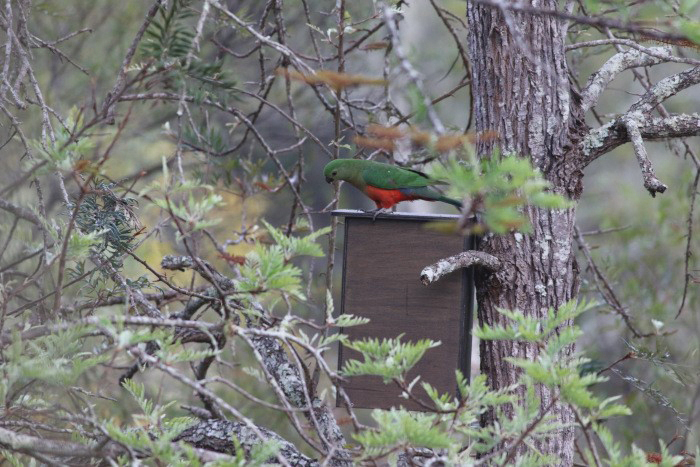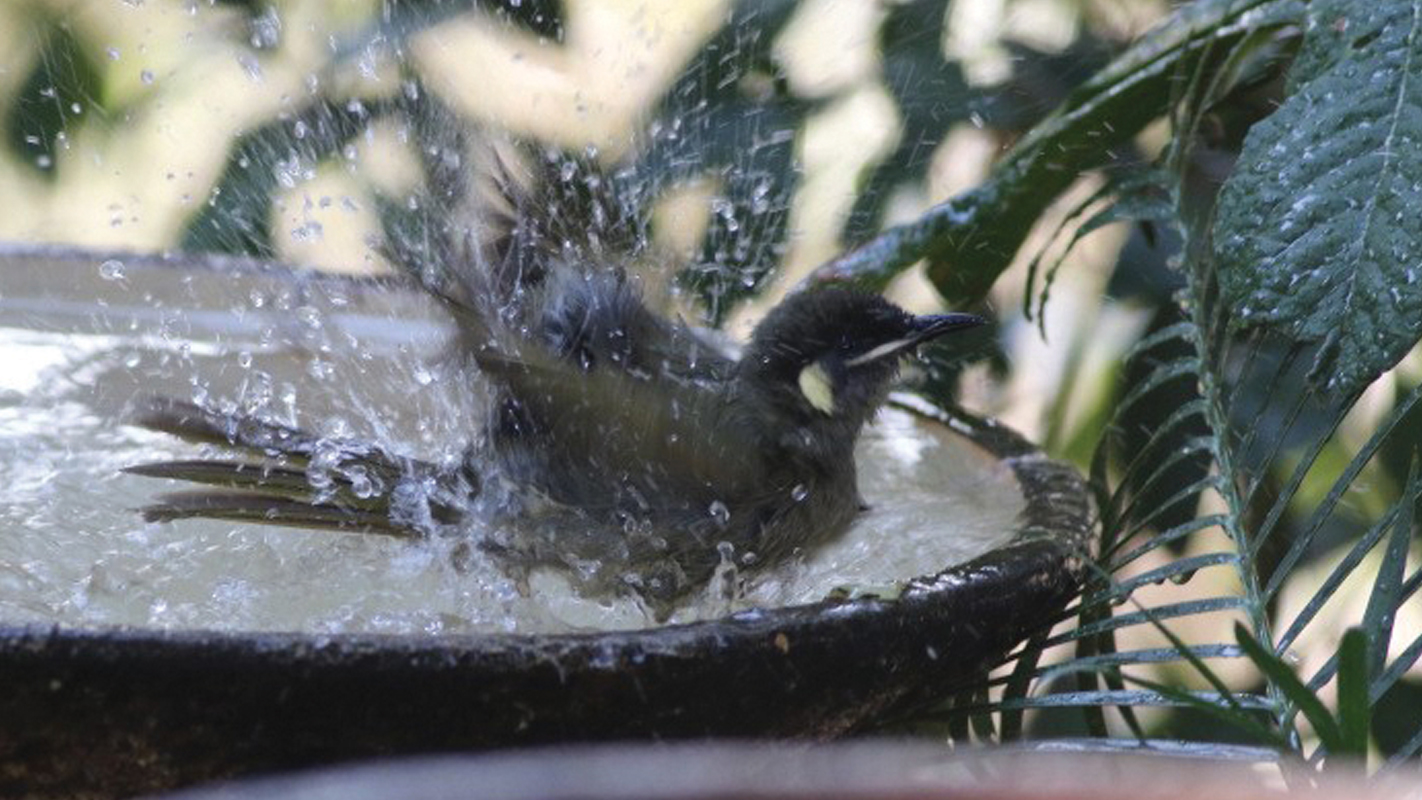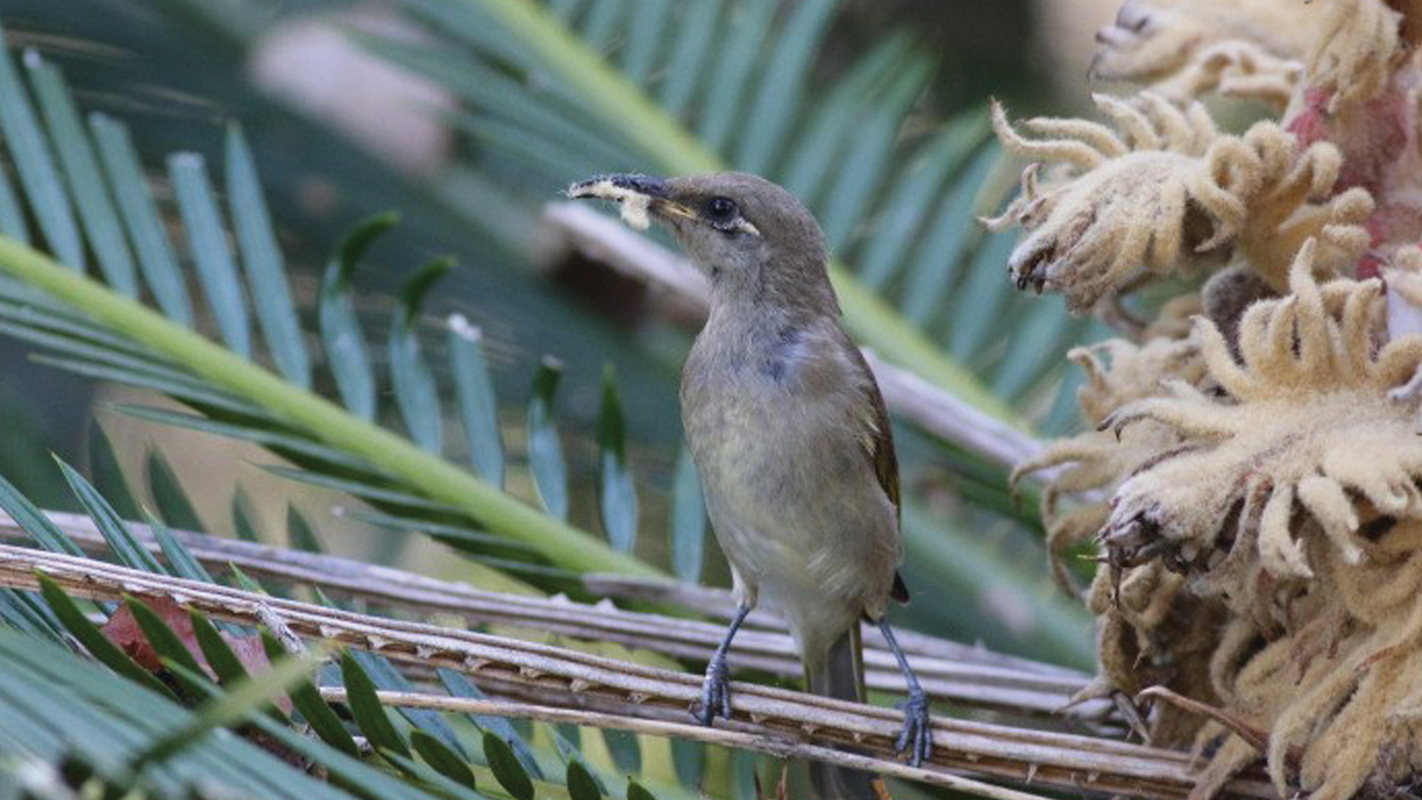With no substantial rain since Easter, and groundwater reserves depleted from the absence of a wet season last summer, Pine Mountain is currently in its worst drought since 2000 (the famous ‘millennial drought’). All the creeks, and most people’s dams, are dry. In response, almost every leaf in the vine scrub has curled up and died. The oranges and browns reminiscent of a temperate autumn are not so welcome in a subtropical spring.
Lots of my free time is now devoted to watering my most recently planted trees. I’m currently hand-watering (using 25 litre bottles) some four tonnes of water per week! So far, I’ve managed to keep most seedlings alive, but my biceps and quadriceps are very much looking forward to rain.
It is a very stressful time of year for much of our wildlife. Unsurprisingly, we’ve seen a massive increase in the popularity of our bird baths. We even bought a third bath to cater for the increased traffic. Yet all three (a combined capacity of approximately 20 litres) are close to bone dry each afternoon. Admittedly, much of this ends up being splashed about, rather than consumed.
There is a cycad (Cycas revoluta) growing beside the bird baths, which is currently seeding. Brown Honeyeaters have been busily collecting the felt from around the seeds to line their nest. Clearly, no drought is going to stop the spring urges of some of our birds. I actually suspect the honeyeaters are among the least affected by the dry weather. That is because Silky Oaks (Grevillea robusta), a favoured food source for nectar-feeding birds, are currently flowering profusely, regardless of the drought. This tree provides a crucial food source in what is always an otherwise grim season.
Coinciding with the drought, we have received quite a few visits from bird species we don’t usually get. Over the last week or so, we had our first pair of Speckled Warblers in two years, along with our first ever Little Bronze-cuckoo. Australian King Parrots usually visit us a couple of times per year, and they also stopped in recently. All of these were transient and only stayed a few hours. I suppose as resources ran out in their usual territories, they were forced to search for greener pastures. If green pastures were their target, it’s unsurprising they were disappointed with what they found at our property!
Article and photos by Chris Wiley
Land for Wildlife member Pine Mountain, Ipswich



